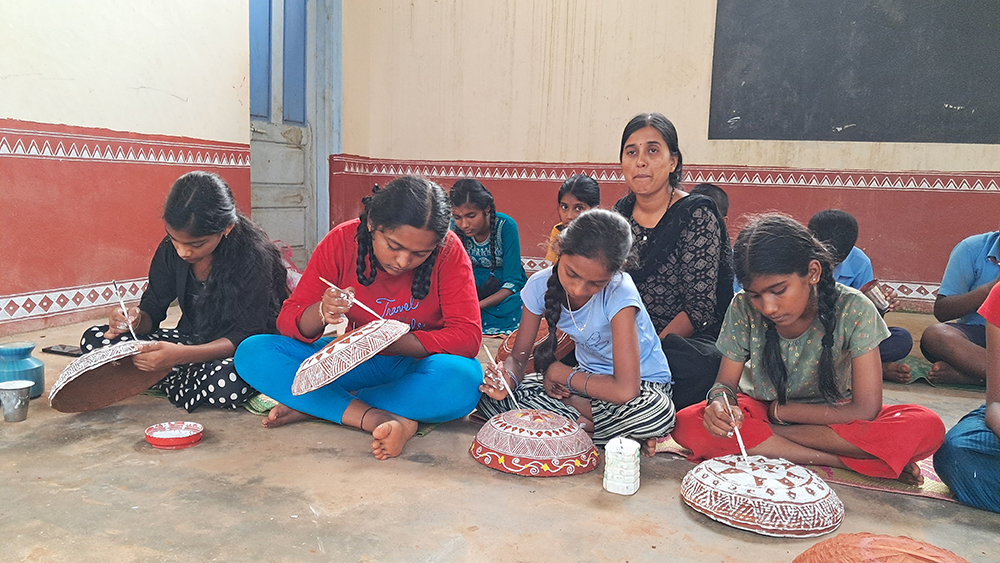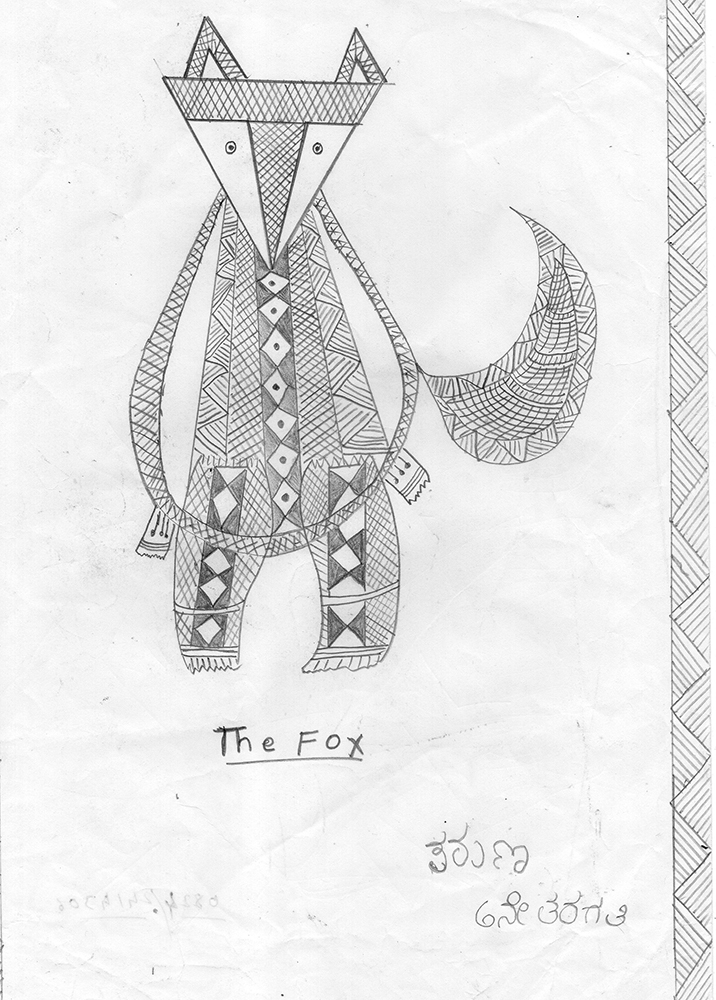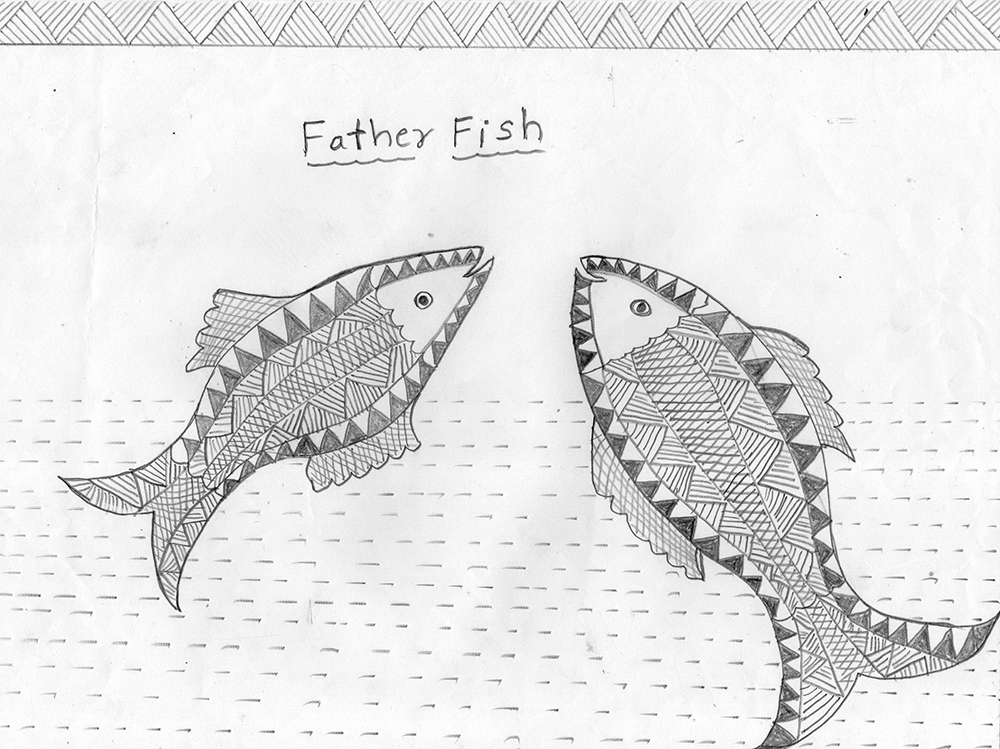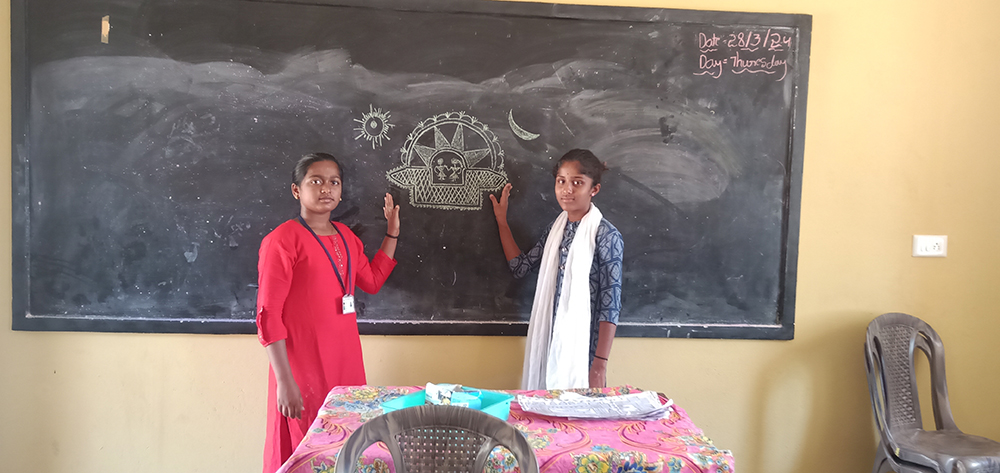Usha GA




Project Period: One year and three months
This Foundation Project implemented by IFA will engage fifth and sixth grade students of Government Higher Primary School in Mandagalale, Shivamogga district with a project on Hase Chittara – a traditional wall art form of Karnataka which is deeply rooted in agrarian culture. Students will attempt to learn this art form with a series of practice sessions and workshops by connecting it to their curriculum in mathematics, science and languages. Usha GA will be the Coordinator for this project.
Usha GA is a folk artist and a teacher from Sagara taluk in Shivamogga. She has been organising Hase Chittara workshops for children and women in Sagara. Usha is associated with various arts and cultural organisations across Karnataka and actively represents this art form in national and international art melas and exhibitions. Given her experience she is best placed to be the Coordinator of this Foundation Project of IFA.
Karnataka is home to many traditional and folk art forms. Hase Chittara is a folk art practiced by the Deewaru community in Shivamogga and Uttara Kannada districts of Karnataka. The walls coloured with red mud are found abundantly in the region and designs are drawn in white paint derived from rice paste and white mud. The lines and patterns on these paintings each symbolise an aspect of nature or depict the religious, social and agricultural practices of the community. These drawings are seen on walls, door frames, and doorsteps in the villages of Malenadu region. The materials used for this art are derived from natural sources such as bark of trees, wild berries, seeds, rocks, minerals, and vegetables. The paintings are divided into three types according to the use of colours. They are bili hase, kappu hase, kemmannu hase. These paintings can also be done on Bamboo baskets which is popularly known as Bhoomibutti.
The location for this project is the Government Higher Primary School in Mandagalale village in Sagara taluk of Shivamogga. The fifth and sixth grade students from this school will be involved in this year long project. During the initial days, the project is envisioned to engage students with the origin, history and the current practice of this art form. Since the school is surrounded by nature, students will be encouraged to observe and draw various birds and animals in hase patterns. This exercise will open doors for a new style of drawing and painting which will also improve their handwriting and creativity. Usha will engage them in illustrating the lessons from their language curriculum by using hase art form.
Students will attempt to write letters, numbers and learn geometrical figures and shapes in this art form and create a storyboard. They will collect stories and songs by interviewing the Deewaru community members and document their lifestyle and other community practices. Usha will invite resource persons to engage students with art integrated workshops on traditional art forms of Karnataka. Usha will also conduct a small comparative study with the students on Warli art form and Hase Chittara. This study will enable them to examine the similarities and differences between the two and help them understand the aesthetics of both art forms.
Usha has selected a few lessons from their Kannada and English textbooks which will be represented in hase drawings by creating rich visual experiential learning possibilities for students. Hase Chittara has some traditional drawings of sun, chariot and other images of local demigods which are used in various ritualistic practices in the region. Therefore, Usha is prepared for the challenging task of engaging community members to bring these patterns and designs within the school context to teach mathematics, languages and other subjects. At the end of the project students will prepare a handbook with all their learnings and create a small performance piece in the school premise.
The outcome of the project will be a publication and a performance in the presence of school staff and villagers. The deliverables to IFA with the final report will include a copy of publication and a still and video documentation of the process and the performance.
This project suitably addresses the framework of IFA’s Arts Education programme in the manner in which it attempts to help students connect their school curriculum to the stories from the regions they inhabit and communities they live with.
IFA will ensure that the implementation of this project happens in a timely manner and funds expended are accounted for. IFA will also review the progress of the project at midterm and document it through an Implementation Memorandum. After the project is finished and all deliverables are submitted, IFA will put together a Final Evaluation to share with Trustees.
